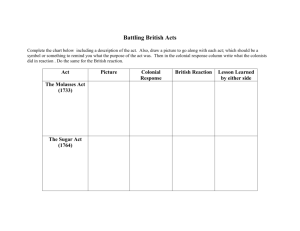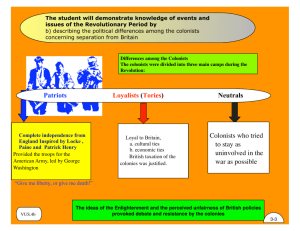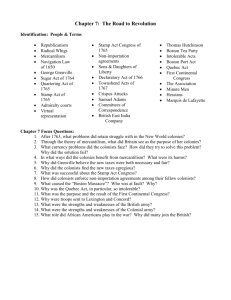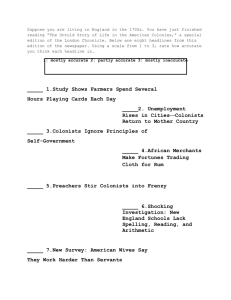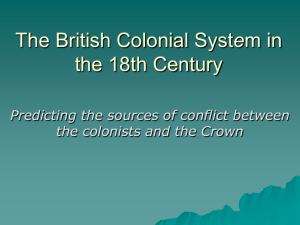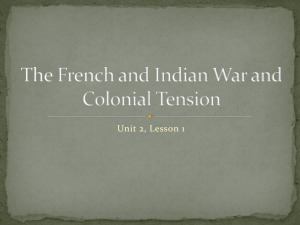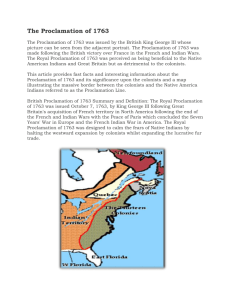Chapter 6 and 7 Study Questions (FOR FUN!!!)
advertisement
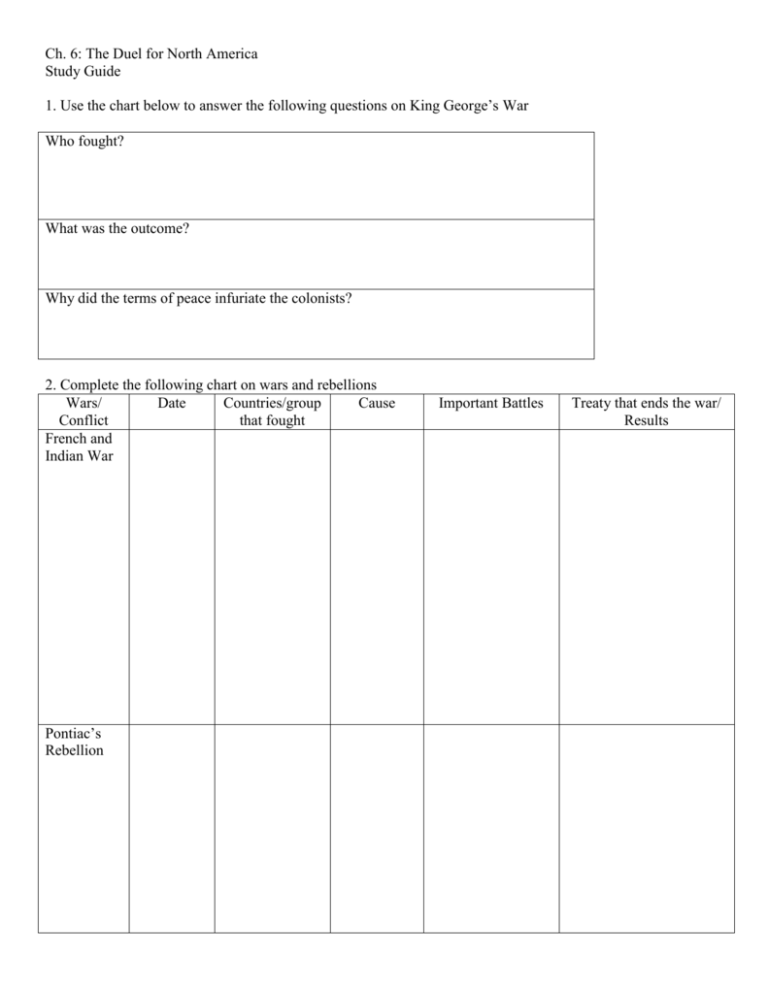
Ch. 6: The Duel for North America Study Guide 1. Use the chart below to answer the following questions on King George’s War Who fought? What was the outcome? Why did the terms of peace infuriate the colonists? 2. Complete the following chart on wars and rebellions Wars/ Date Countries/group Cause Conflict that fought French and Indian War Pontiac’s Rebellion Important Battles Treaty that ends the war/ Results Identification: 3. George Washington – provide details about his command in the Ohio country, in terms of actions and consequences. 4. What was the Albany Congress? Why did it fail? 5. How was the result of General Braddock’s foray outside of Fort Duquesne? How did the natives respond? 6. Identify William Pitt 7. What were the terms of the Proclamation of 1763? How did American colonists respond to this proclamation? 8. After the war had concluded, deep-seated friction between the English and the Colonists emerged. Why did this tension exist? 9. Agree or Disagree with the following statement and support your conclusion. “The French and Indian War helped unify the colonies as they moved toward independence.” 10. Explain how the removal of the French in North America and the limited influence of the Spanish and the Indians affected the move for colonial independence. Thematic Connection – Conflict: Explain how the French and Indian War proved to be the catalyst in the move toward American independence. CHAPTER 7: ROAD TO REVOLUTION Name: 1. How did the colonists lay the groundwork for revolution from the early days of settlement? (4 reasons) 2. Define mercantilism. 3. Explain the problem of currency in the colonies. 4. What was the British reaction to the colonial money problems? 5. What was a “royal veto?” 6. List 5 examples of how colonists benefited from mercantilism during the period of salutary neglect. 7. How does the US use a similar system today? 8. List 3 ways mercantilism hurt the colonies. 9. What was Lord Grenville’s challenge? 10. What was the purpose of the Quartering Act? 11. What two rights did the Sugar and Stamp Act violate? 12. How was the claim of “no taxation without representation” a double standard for many of the colonists? 13. What was meant by Grenville’s “virtual representation?” 14. Who made the non importation agreements? 15. Why were these agreements so successful in the colonies? 16. Give two actions taken by the Sons and Daughters of Liberty. 17. What did the Declaratory Act reinforce in the colonial minds? 18. What was Charles Townshend’s challenge? 19. Why were the non importation agreements not as successful this time? 20. How did Lord North change the Townshend policy? 21. Who was responsible for creating the Committees of Correspondence? 22. Why were the Committees of Correspondence important to the struggling colonies? 23. Why did the British want to save the British Tea Company? 24. Who sponsored the Boston Tea Party? 25. Why were the colonists against the Quebec Act? 26. What problem did the Quebec Act try to solve? 27. Why was Massachusetts singled out by the Intolerable Acts? 28. How was the Association different from the other actions taken by the colonists? 29. What did the 1st Constitutional Congress do? 30. What happened at Lexington Concord? COMPARISON CHART COUNTRY ENGLAND 1. COLONIAL STRENGTHS WEAKNESSES 1. 2. 2. 3. 3. 1. 1. 2. 2. 3. 3. 31. What was meant by the line “ain’t worth a continental?” 32. What is meant by the title, “a thin line of heroes?” 33. What role did African Americans play in the war? 34. Explain how some Americans profited from the war experience.
